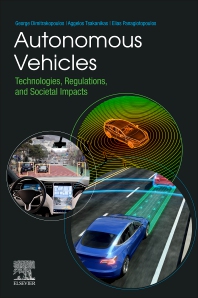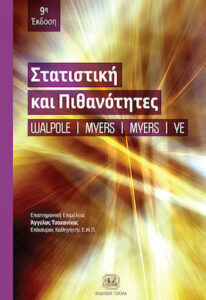 The last twenty years have witnessed a tremendous increase in industrial collaboration in research and development (R&D) both in Europe and the world at large. Firms have increasingly opted for collaboration in an effort to deal with the uncertainties that stem from rising research costs, rapid technological change and the development of a network economy. Governments have been quick to support this trend in order to promote competitiveness and, in the European context, to foster cohesion.
The last twenty years have witnessed a tremendous increase in industrial collaboration in research and development (R&D) both in Europe and the world at large. Firms have increasingly opted for collaboration in an effort to deal with the uncertainties that stem from rising research costs, rapid technological change and the development of a network economy. Governments have been quick to support this trend in order to promote competitiveness and, in the European context, to foster cohesion.
The contributions collected in this volume focus explicitly on cooperative R&D in Europe. The first part of the book offers empirical evidence on the extent, scope and direction of this collaboration and explores the motives and problems of the participating firms, as well as the perceived benefits they have enjoyed. The second part deals with the difficult policy issues that diverse national R&D regimes create for successful cooperative research and international convergence. The extensive survey results of European firms allow the authors to compare collaborative research policies in various EU countries and contrast the policy design that has emerged in the EU with that of the USA.
This book offers the most comprehensive account of collaborative industrial research in Europe and explores both the business strategies that have motivated it and the public policies that have promoted it. Academics, graduate students, government agencies and European institutions involved in science and technology policy and R&D management will find this volume to be invaluable. It will also be of great practical use to companies interested in forming strategic technical alliances.
by Yannis Caloghirou (Editor), Nicholas S. Vonortas (Editor), Stavros Ioannides (Editor)
Knowledge Flows in European Industry
 The channels and mechanisms of knowledge flows define the links that make up production and innovation systems. As such, they relate directly or indirectly to all policies that affect such systems. Knowledge flows are also directly related to intellectual property protection policies and competition policies that create the infrastructure supporting various forms of formal interaction among economic agents in production and innovation systems.
The channels and mechanisms of knowledge flows define the links that make up production and innovation systems. As such, they relate directly or indirectly to all policies that affect such systems. Knowledge flows are also directly related to intellectual property protection policies and competition policies that create the infrastructure supporting various forms of formal interaction among economic agents in production and innovation systems.
Knowledge Flows in European Industry presents the results of an extensive research programme funded by the European Commission to empirically appraise the dissemination of knowledge relevant to the innovative activities of European manufacturing and service sectors. It explores the extent, density, and mechanism of innovation-related knowledge flows affecting the innovative capacity of European industry and the mechanisms that support such flows, as well as examining incentives to access and transmit results and the determinants of knowledge transmission.
Featuring contributions from leading international scholars including Anthony Arundel and Bent Dalum, this interdisciplinary volume focuses on questions of interest to regional, national, and pan-European science, technology and innovation policy, and will be an important read for those involved in business and management as well as those in the field of economics.
Edited By Yannis Caloghirou, Anastasia Constantelou, Nicholas Vonortas
 Knowledge intensive entrepreneurship lies at the core of the structural shift necessary for the growth and development of a knowledge based economy, yet research reveals that the EU has fewer young leading innovators, and Europe’s new firms do not adequately contribute to industrial growth. This is especially true in the high R&D intensive, high-tech sectors. This structural malaise, undermining Europe’s growth potential, is well diagnosed, but poorly understood.
Knowledge intensive entrepreneurship lies at the core of the structural shift necessary for the growth and development of a knowledge based economy, yet research reveals that the EU has fewer young leading innovators, and Europe’s new firms do not adequately contribute to industrial growth. This is especially true in the high R&D intensive, high-tech sectors. This structural malaise, undermining Europe’s growth potential, is well diagnosed, but poorly understood.
This volume fills this important gap by exploring new firms that have significant knowledge intensity in their activity and develop and exploit innovative opportunities in diverse sectors. Through an evolutionary and systemic approach to entrepreneurship, focusing on knowledge intensive entrepreneurship as both a micro and a macro phenomena and analyzing firms in the context of various socio-economic models, the authors explore firms creation and origins around the world, their organization, strategies and business models as well as the role of innovation systems and institutions in their formation and growth.
This comprehensive research text is vital reading for academics, researchers and students of high-tech and knowledge intensive entrepreneurship as well as those with an interest in industrial dynamics, innovation management and public policy.
Edited By Franco Malerba, Yannis Caloghirou, Maureen McKelvey, Slavo Radoševic
 Autonomous Vehicles: Technologies, Regulations, and Societal Impacts explores both the autonomous driving concepts and the key hardware and software enablers, Artificial intelligence tools, needed infrastructure, communication protocols, and interaction with non-autonomous vehicles. It analyses the impacts of autonomous driving using a scenario-based approach to quantify the effects on the overall economy and affected sectors. The book assess from a qualitative and quantitative approach, the future of autonomous driving, and the main drivers, challenges, and barriers. The book investigates whether individuals are ready to use advanced automated driving vehicles technology, and to what extent we as a society are prepared to accept highly automated vehicles on the road. Building on the technologies, opportunities, strengths, threats, and weaknesses, Autonomous Vehicles: Technologies, Regulations, and Societal Impacts discusses the needed frameworks for automated vehicles to move inside and around cities. The book concludes with a discussion on what in applications comes next, outlining the future research needs.
Autonomous Vehicles: Technologies, Regulations, and Societal Impacts explores both the autonomous driving concepts and the key hardware and software enablers, Artificial intelligence tools, needed infrastructure, communication protocols, and interaction with non-autonomous vehicles. It analyses the impacts of autonomous driving using a scenario-based approach to quantify the effects on the overall economy and affected sectors. The book assess from a qualitative and quantitative approach, the future of autonomous driving, and the main drivers, challenges, and barriers. The book investigates whether individuals are ready to use advanced automated driving vehicles technology, and to what extent we as a society are prepared to accept highly automated vehicles on the road. Building on the technologies, opportunities, strengths, threats, and weaknesses, Autonomous Vehicles: Technologies, Regulations, and Societal Impacts discusses the needed frameworks for automated vehicles to move inside and around cities. The book concludes with a discussion on what in applications comes next, outlining the future research needs.
G.Dimitrakopoulos, A.Tsakanikas, E.Panagiotopoulos,
“Autonomous Vehicles: Technologies, Regulations, and Societal Impacts”
https://www.elsevier.com/books/autonomous-vehicles/dimitrakopoulos/978-0-323-90137-6

- Associate NTUA Professor Aggelos Tsakanikas edited the Greek version of the book by R.E. Walpole, R. H. Myers, S. L. Myers, K. Ye, “Probability & Statistics for Engineers & Scientists”, 9th Edition, Prentice Hall. 2019. It is utilized in the context of the core course of the School of Chemical Engineering, “Statistics and Experimental Design for Engineers”.
Summary
Contains: Introduction to Statistics and Data Analysis, Probability Theory, Random Variables & Probability Distributions, Introduction to Mathematical Statistics of Estimates, Discrete Probability Distributions, Continuous Probability Distributions, Two Random Functions & Samples, Basic Data Single-sample and two-sample hypotheses, Simple linear regression & Linear correlation, Multiple linear regression and nonlinear regression models, Single-factor experiments, Factor experiments, 2k-factor experiments in the class, Statistical Tables & Evidence, Answers to selected problems.
Publisher: Tziola
Format: Hard cover
Year of publication: 2019
Number of pages: 744 - ISBN-10: 9604187171
- ISBN-13: 9789604187171
- Dimensions: 29×21
